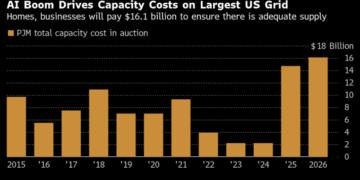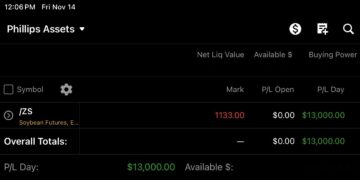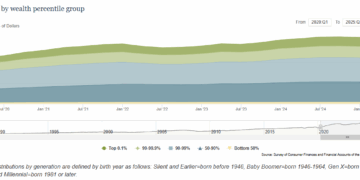Cupid might be knocking on doors this February, but for savvy investors, it’s time to focus on a different kind of love: love for your portfolio. The winter market can be notoriously fickle, with icy headwinds and February’s notorious “selloff.” But fear not, intrepid financiers! This calendar is your financial cupid, guiding you through the market’s twists and turns with timely reminders, key dates, and expert tips. Dive into earnings season, navigate tax deadlines, and discover hidden opportunities lurking amidst the Valentine’s decorations. Whether you’re a seasoned pro or a fresh-faced newbie, this calendar is your compass, helping you navigate the complexities of February’s financial landscape and emerge triumphantly, with your portfolio blossoming like a spring bloom. So ditch the chocolates and pick up this planner – get ready to fall in love with your financial future, one strategic move at a time.
February 1
- Economic Data
- Unemployment Claims: The number of unemployed people is an important signal of overall economic health because consumer spending is highly correlated with labor-market conditions.
- ISM Manufacturing PMI: Leading indicator of economic health.
February 2
- Employment Situation Report (January)
- Economic Data
- Average Hourly Earnings: This is the earliest data related to labor inflation.
- Non-Farm Employment Change: Job creation is an important leading indicator of consumer spending, which accounts for a majority of overall economic activity.
- Unemployment Rate: Although it’s generally viewed as a lagging indicator, the number of unemployed people is an important signal of overall economic health because consumer spending is highly correlated with labor-market conditions.
- Revised University of Michigan Consumer Sentiment: Financial confidence is a leading indicator of consumer spending, which accounts for a majority of overall economic activity.
February 5
- Economic Data
- ISM Services PMI: It’s a leading indicator of economic health
February 8
- Economic Data
- Unemployment Claims: The number of unemployed people is an important signal of overall economic health because consumer spending is highly correlated with labor-market conditions.
February 10
- Employees Who Work for Tips Reporting Due Date ($20 or more in January 2024)
February 11
- Major Spending Event (Super Bowl)
February 13
- Economic Data
- Core CPI and CPI: Consumer prices account for a majority of overall inflation. Inflation is important to currency valuation because rising prices lead the central bank to raise interest rates out of respect for their inflation containment mandate.
February 14
- Major Spending Holiday (Valentine’s Day)
February 15
- Individual Exemptions Due (2023): If you claimed any exemptions from income tax withholding on the W-4 that you filed with your employer last year, you must file a new W-4 to continue those exemptions for the next year.
- Economic Data
- Core Retail Sales and Retail Sales: It’s the primary gauge of consumer spending, which accounts for the majority of overall economic activity.
- Empire State Manufacturing Index: It’s a leading indicator of economic health – businesses react quickly to market conditions, and changes in their sentiment can be an early signal of future economic activity such as spending, hiring, and investment.
- Unemployment Claims: The number of unemployed people is an important signal of overall economic health because consumer spending is highly correlated with labor-market conditions.
February 16
- Economic Data
- Core PPI and PPI: It’s a leading indicator of consumer inflation – when producers charge more for goods and services the higher costs are usually passed on to the consumer.
- Preliminary UoM Consumer Sentiment: Financial confidence is a leading indicator of consumer spending, which accounts for a majority of overall economic activity.
February 20
- Bank and New York Stock Exchange (NYSE) Holiday (Washington’s Birthday)
February 21
- Economic Data
- FOMC Meeting Minutes: It’s a detailed record of the FOMC’s most recent meeting, providing in-depth insights into the economic and financial conditions that influenced their vote on where to set interest rates.
February 22
- Economic Data
- Unemployment Claims: The number of unemployed people is an important signal of overall economic health because consumer spending is highly correlated with labor-market conditions.
- Flash Manufacturing PMI and Flash Services PMI: It’s a leading indicator of economic health – businesses react quickly to market conditions, and their purchasing managers hold perhaps the most current and relevant insight into the company’s view of the economy.
February 27
- Economic Data
- CB Consumer Confidence: Financial confidence is a leading indicator of consumer spending, which accounts for a majority of overall economic activity.
February 28
- Economic Data
- Preliminary GDP: While this is quarter/quarter data, it’s reported in an annualized format. There are 3 versions of GDP released a month apart – Advance, Preliminary, and Final. The Advance release is the earliest and thus tends to have the most impact.
February 29
- Economic Data
- Core PCE Price Index: Differs from Core CPI in that it only measures goods and services targeted towards and consumed by individuals. Prices are weighted according to total expenditure per item which gives important insights into consumer spending behavior. CPI is released about 10 days earlier and tends to garner most of the attention. It’s the Federal Reserve’s primary inflation measure.
- Unemployment Claims: The number of unemployed people is an important signal of overall economic health because consumer spending is highly correlated with labor-market conditions.
Miscellaneous
- Tax planning: Consult a tax advisor to optimize deductions, credits, and investment strategies for tax efficiency.
- Review annual reports: Analyze earnings results, management commentary, and future outlook for your key holdings.
- Adjust portfolio weights: Based on company performance and sector trends, reallocate holdings within your asset classes.
- Review all of your insurance policies: Avoid over paying for coverage.
- Corrected Form 1099: Sometimes investment and trading information has to be corrected by your broker. Be on the look out for a corrected 1099 that is usually mailed out in February.















































